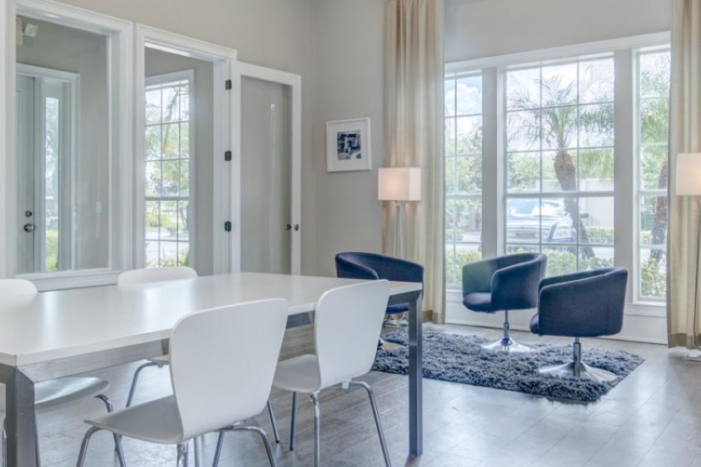Apartment Sales Up 18%
Carroll Organization, which a couple of years ago was mainly seeking new luxury properties, is now looking to capitalize on strong renter demand for workforce housing. “We feel the biggest sweet spot for us is that Class-B to B-plus type space,” Carroll said. “It’s not the bottom, it’s not the top, but it represents what 70-75% of people renting apartments can actually afford on a monthly basis.”

Sales of apartment properties soared 18% last year, blowing past the previous record as the multi-family sector became commercial real estate’s most-active segment.
A total of $110.2 billion of large rental properties traded, up from $93.5 billion the year before, according to Real Estate Alert’s Deal Database. The tally was well above the previous high-water mark of $96.9 billion set in 2016 — and more than double the $51.8 billion peak of the previous cycle.
In the brokerage race, CBRE retained the top perch, which it has held for more than a decade. The next five finished in the same order as 2017 — Newmark, HFF, Cushman & Wakefield, JLL and Eastdil Secured. The top six brokerages all notched double-digit volume increases.
For the first time, annual apartment sales surpassed those of offices, traditionally the busiest property sector. Office trades totaled $96.8 billion last year. Multi-family sales have risen steadily since 2009, with the only year-over-year dip occurring in 2017, when post-election uncertainty temporarily slowed the pace of deals. Market pros are generally optimistic that 2019 will be at least as active as last year.
“The overall sentiment just continues to be positive,” said Brian McAuliffe, president of CBRE’s capital-markets division. He added that some headwinds that were expected to temper sales in 2018 — such as rising interest rates, slowing rent growth and additional supply in some markets — ultimately had little effect. “Multi-family just blew right through them, and I think that’s a function of capital flows going into the asset class, attracted by its stable and predictable cashflows,” he said. “We have to have an unexpected market shock that has an impact on all of real estate before we have a slowdown.”
Matthew Lawton, HFF’s Chicago-based executive managing director, said his firm’s listings pipeline is “very robust” and there’s an abundance of capable buyers, including foreign investors who aren’t yet in the U.S. market but want to establish large footprints. “There’s plenty of dry powder, plenty of liquidity and a substantial amount of product coming to the market,” he said. “I believe there’s going to be a lot of activity in 2019.”
Overall performance of multi-family properties remains strong. Renters leased nearly 287,000 more units than were vacated in 2018, marking the highest net absorption since 2000, according to CBRE. The nationwide occupancy rate grew 20 bp year-over-year to 95.5%. Rent growth averaged 2.8%, up some 30 bp from the previous year.
“That performance has buoyed confidence, and there’s an enormous availability of capital helping facilitate transaction volume,” said Matt Jones, director of acquisitions at Norfolk, Va., investment manager Harbor Group International. He noted continued strong interest from a wide range of investors, including institutions, family offices, wealth managers and wealthy individuals. “We’re very much of the belief that equity
capital still views multi-family as a very good risk-adjusted return.” The sector’s extraordinary growth in sales reflects the increasing institutionalization of the market, several pros said.
“Multi-family, 15 years ago, was primarily a niche industry,” said M. Patrick Carroll, chief executive of Atlanta-based Carroll Organization. “Big institutions went into office buildings and shopping centers — and really, that’s shifted. Institutional investors, high-net-worth investors and foreign investors are getting exposure to multi-family, and that’s pushing transaction volume.”
That changing buyer pool also has accelerated turnover, said McAuliffe at CBRE. “Holding periods for assets have been much lower and debt strategies have been much shorter, which has allowed for increased velocity of transactions,” he said. To be sure, there are some soft spots. Pros noted weakening fundamentals at luxury properties in cities that have seen heavy deliveries in recent years, such as Atlanta, Chicago, Denver, Los Angeles and Seattle.
Capitalization rates — especially on value-added deals — in many markets have compressed to levels well below historical averages, as bidding contests have driven up prices. But those valuation gains are expected to slow, market experts said, making buyers more reliant on rent growth to meet their return goals.
There are also concerns about interest-rate volatility, after recent swings in the benchmark 10-year Treasury rate. “We’re looking to achieve yield for our investors, and to have that yield eaten by debt service is obviously a concern,” said David Nelson, managing director of acquisitions at Hamilton Zanze of San Francisco.
Similar concerns were present at the beginning of last year, but didn’t prove strong enough to hamper trading. And some of them appear to be easing. The Federal Reserve has signaled a pause in rate increases. Construction is projected to be moderate this year and fall subsequently. Meanwhile, the renter pool continues to grow, increasingly populated by millennials and empty nesters.
The upshot: Brokers are reporting strong pipelines, and investment shops plan to keep deploying capital into the sector. “We did about $525 million on the acquisitions side last year,” Nelson said, “In the first quarter of 2019 we’re going to close on approximately $325 million, so we’re off to a very fast start.”
In some cases, buyers are shifting their strategies to adapt to market trends. Hamilton Zanze historically focused on valueadded properties, but has recently turned to core-plus deals. “Value-added cap rates have compressed a lot more than coreplus cap rates,” said Nelson. “It’s been incredibly competitive, and we weren’t able to get the returns that we wanted in the value-add space.”
Carroll Organization, which a couple of years ago was mainly seeking new luxury properties, is now looking to capitalize on strong renter demand for workforce housing. “We feel the biggest sweet spot for us is that Class-B to B-plus type space,” Carroll said. “It’s not the bottom, it’s not the top, but it represents what 70-75% of people renting apartments can actually afford on a monthly basis.”
Nuveen Real Estate, which operates seven funds across the risk spectrum, lately has also put more emphasis on the middle market.
“We believe the best opportunities going forward remain in multi-family communities that cater to the middle-income household renter,” said Nikita Rao, Nuveen’s managing director of portfolio management, housing and real estate for the Americas. “By virtue of this, we are underweight [in] high-rise and luxury buildings.” The TIAA affiliate acquired approximately $2.7 billion of apartment properties last year and disposed of about $600 million. Its acquisitions target this year is about $2.4 billion.
Blake Okland, Newmark’s multi-family chief, said he expects capital to continue to flow to secondary and tertiary markets as investors seek higher yields. He also said he expects investments in sub-sectors such as student and senior housing to continue growing.
Even some slippage in occupancy and rent growth likely wouldn’t have a drastic impact on the sector, Okland said. “We should get worried when we see overleverage, or material removal of liquidity and capital sources,” he said. “We’re not seeing that, and we’re not overexposed to any one thing beyond supply and demand.”
A substantial chunk of 2018’s sales increase came in Manhattan and New York’s outer boroughs. The city’s trading volume surged to $9.7 billion, after slumping to $4.3 billion in 2017. Cushman was the leading broker, with a 37% market share. Ten of the nation’s 12 largest single-property deals last year were in New York.
Douglas Harmon, a chairman of capital markets at Cushman, said 2017’s New York activity was dampened by factors including post-election jitters and “the hangover from a buoyant 2015-16.” Last year, he said, listings picked up as many private owners and REITs “took the opportunity to prune or recapitalize” holdings in the face of strong demand from “a broad base of global institutional investors under-allocated to multi-family.”
Sizable sales gains also were recorded last year in the Los Angeles, Phoenix, North Carolina and Houston markets. The Denver area saw the largest volume decrease: 25%.
In the brokerage race, CBRE handled $26 billion of sales last year, a 25.5% share of the brokered total. Second-place Newmark had $16.6 billion of trades for a 16.3% share, followed by HFF ($14.8 billion, 14.5%), Cushman ($10.5 billion, 10.3%), JLL ($6.6 billion, 6.4%) and Eastdil ($6.5 billion, 6.4%). Marcus & Millichap ($5.9 billion, 5.8%) boosted its volume by 86% — the biggest gain of the top 10 brokers — and moved up two notches to seventh place.






